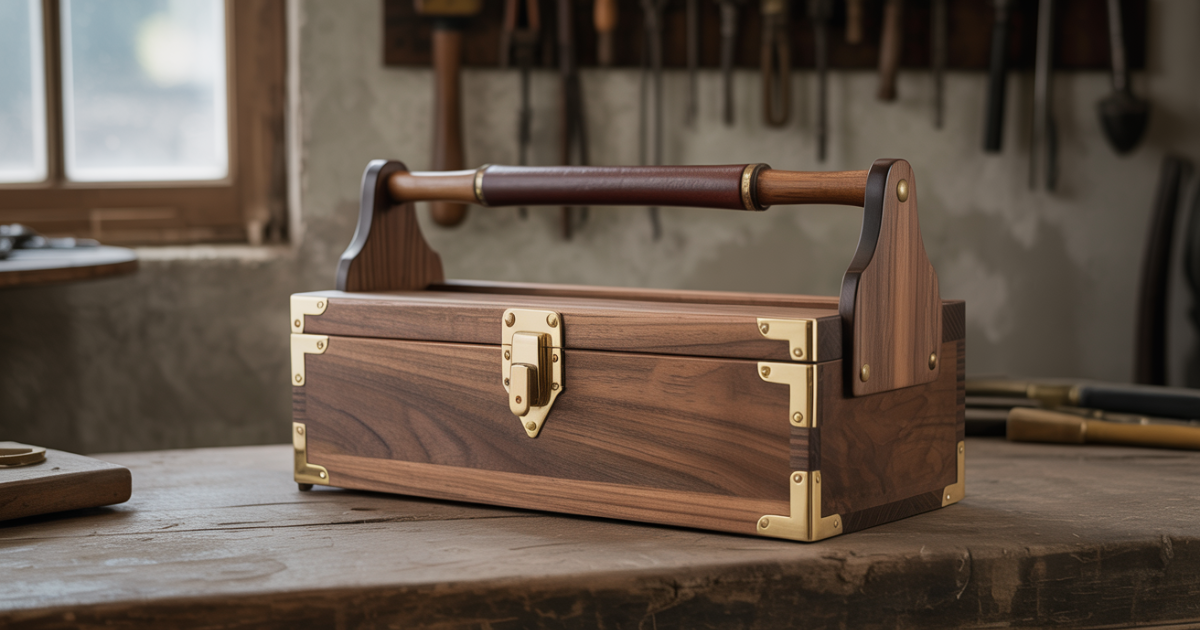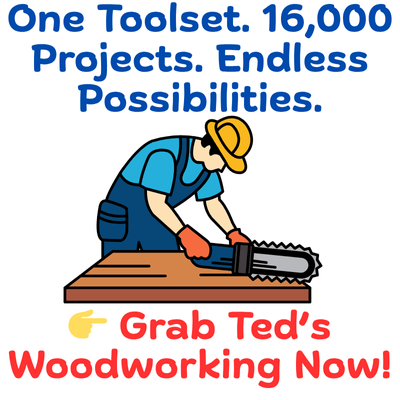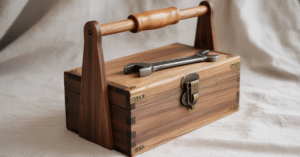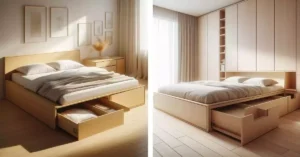If you love DIY projects, you know how key a tidy workspace is. With most projects requiring numerous tools and materials, a messy workspace can be overwhelming. A survey showed 75% of DIY fans think a clean workspace boosts their work.
A beautifully crafted tool box storage does more than keep things neat. It also makes your workshop look better. Whether you’re searching on Pinterest or checking out DIY woodworking, good tool storage is vital.
Key Takeaways
- Discover the importance of well-designed tool storage for DIY productivity.
- Explore various wooden tool chest designs for inspiration.
- Learn how to create a modern wood tool storage solution.
- Discover how to keep your workspace organised with DIY wood projects.
- Get inspired by Pinterest tool box ideas for your next DIY project.
The Evolution of Wooden Tool Storage in Modern Workshops
The way we store tools has changed, moving towards being more sustainable and crafted. DIY fans and pros are looking to improve their work areas. This has led to a higher demand for modern wood tool storage solutions.
Why Wood Remains the Premium Choice for Tool Storage
Wood stands out because it’s durable, looks great, and feels warm. It’s a natural choice for handmade tool box designs, adding a personal touch. Plus, wood can be sourced in a way that’s good for the planet, making it a sustainable tool storage option.
Blending Tradition with 2025 Design Trends
Today’s workshops mix old-school skills with new designs. This mix is seen in wooden tool chest designs with clean lines, simple looks, and smart storage ideas.
Sustainability Meets Functionality
There’s a big push for green choices in tool storage, and wood is at the forefront. Choosing wood means you get a tough material and support the environment. This is why rustic tool box ideas are becoming more popular, showing off wood’s natural beauty.
Rustic Farmhouse Tool Caddy with Leather Accents

Add a touch of rustic elegance to your workshop with a custom-built tool caddy. It showcases your woodworking skills. This project combines rustic wood with distressed leather accents for a unique storage solution.
Materials and Dimensions for the Perfect Carry Size
Start by choosing the right materials for your tool caddy. Use reclaimed or rustic wood like oak or pine for a farmhouse look. The size depends on your tools and workshop space. Aim for a caddy that’s 12 inches wide, 6 inches deep, and 8 inches tall.
Step-by-Step Building Guide with Dovetail Joints
Building the tool caddy involves several steps. Cut the wood to size, assemble the body with dovetail joints, and attach the bottom panel. Dovetail joints are strong and durable, perfect for a tool storage unit.
- Cut the wood for the sides, back, and front panels.
- Assemble the body using dovetail joints.
- Attach the bottom panel and add dividers as needed.
Adding Distressed Leather Handles and Dividers
Add elegance and functionality with distressed leather handles and dividers. The leather complements the rustic wood, adding sophistication to your project.
Tool Organisation Tips for Hand Tools
Effective tool organisation is key to a useful tool caddy. Here are some tips:
- Use dividers to separate different types of tools.
- Store frequently used tools in easy-to-access locations.
- Keep your tool caddy clean and well-maintained to ensure longevity.
By following these guidelines, you can create a beautiful and functional rustic farmhouse tool caddy. It will enhance your workshop and show off your woodworking skills.
Minimalist Japanese-Inspired Tool Box with Hidden Compartments
You can make a tool box that looks like art by using minimalist Japanese design. This style is all about being simple, useful, and connected to nature.
Essential Materials and Traditional Joinery Techniques
You’ll need strong woods like cedar or cypress for this project. These woods are both tough and look great. Traditional Japanese joinery, like dovetail and mortise-and-tenon joints, will help build the box. These methods make the box strong and add to its simple look.
Construction Process for Sliding Panels and Secret Drawers
Building the tool box means making sliding panels and secret drawers. These parts are all about hiding things. With careful measurements and smooth glides, these parts work perfectly. They keep your tools tidy and hidden.
Applying Oil-Based Finishes for a Natural Aesthetic
For a natural wood look, use an oil-based finish. This finish brings out the wood’s grain and protects it well.
Organising Precision Tools in Dedicated Spaces
Inside the tool box, you can set up special spots for your precision tools. Use dividers and small compartments to keep them organised. This makes your work easier and faster.
By following these steps, you can make a unique handmade wooden tool holder. It will show off a minimalist design and meet your needs perfectly.
Vintage Industrial Rolling Tool Chest
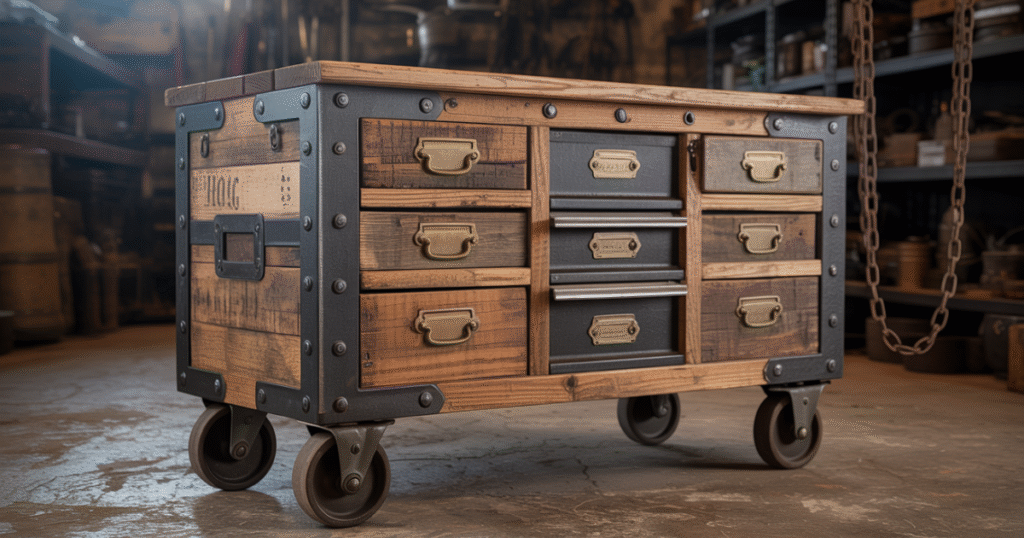
A vintage industrial rolling tool chest adds a touch of history to your workshop. It’s both a useful storage solution and a standout piece. It combines cast iron’s strength with reclaimed wood’s charm, making it a unique addition.
Combining Reclaimed Wood and Cast Iron Elements
To get the vintage look, mix reclaimed wood and cast iron. Start by finding reclaimed wood with history, like old barn wood. For cast iron, you can buy new hardware or use old pieces.
Building the Frame, Drawers, and Pull-Out Trays
Building the chest involves making a strong frame, drawers, and trays. Use mortise and tenon joinery for the frame. Design drawers and trays to hold your tools neatly, with dividers for organisation.
Installing Heavy-Duty Casters and Antique Hardware
Make the chest mobile with heavy-duty casters. Choose antique hardware for drawers and doors. This adds to the look and authenticity.
Organising Power Tools and Accessories
A good organisation is crucial for a tool chest. Use dividers and trays to sort tools and accessories. Plan a layout that includes:
| Tool Type | Storage Solution | Benefits |
|---|---|---|
| Power Tools | Deep drawers with dividers | Easy access, protected from dust |
| Hand Tools | Shallow trays with individual slots | Organized, prevents damage |
| Accessories | Small compartments and hooks | Convenient, keeps workspace tidy |
By following these steps, you can make a vintage industrial tool chest. It will not only store your tools but also be a workshop centrepiece.
Multi-Tier Modular Tool Organisation System

Building a multi-tier modular tool system is a smart way to use your workshop’s space. It lets you make a space that grows with your projects and tools. With interlocking modules and stackable parts, you can use your space up and down and keep tools easy to find.
Designing Interlocking Modules for Workshop Evolution
For a great modular tool system, make modules that can change or grow. Use parts that fit together well, so you can change your setup as you need. With customizable tool inserts, you can make each module fit your tools perfectly, saving space.
Construction Details for Stackable Components
Stackable parts need to be strong and stable. Use good materials and strong ways to join them, like dado or dovetail joints. Adding adjustable dividers helps fit tools of all sizes, making your system more useful.
Creating Custom Inserts for Specific Tool Collections
Custom inserts are key to a good modular system. They let you organise your tools just right. For example, use silicone-lined compartments to protect tools or pegboard inserts to hang them, keeping them organised and easy to get to.
Configuring Your System for Different Workshop Layouts
A modular system is great because it can change. To set it up for different layouts, follow these steps:
- Measure your workshop and pick the best spots for your modules.
- Plan how you’ll arrange your modules based on your tools and how you work.
- Use universal connectors to link modules, making it easy to change things up.
- Try out your setup and tweak it to make your workspace better.
With a multi-tier modular tool system, you can make a workshop that’s efficient and can grow with you. It’s perfect for anyone who loves to work on projects, whether you’re a pro or just starting.
Stylish Wood Tool Box Ideas for 2025: The Artisan’s Portable Workstation

In 2025, the perfect tool box for artisans is more than just storage. It’s a mobile workspace that’s both stylish and efficient. Artisans are looking for innovative solutions, and portable workstations are getting a lot of attention.
Innovative Features for On-Site Crafting Projects
Modern portable workstations are made for on-site crafting. They have built-in vice systems, ergonomic work surfaces, and lots of storage for tools and materials.
Innovative storage solutions are key. They help artisans organise their tools well and get them quickly when needed.
Building the Collapsible Frame with Integrated Work Surface
A portable workstation’s collapsible frame is crucial. It must be strong but light. The work surface should be stable for crafting, even in tough environments.
Artisans use top-notch materials and smart design. This way, they make a workstation that’s both tough and easy to carry.
Incorporating Charging Stations and LED Lighting
Many modern workstations have charging stations for power tools and LED lights. These features are great for artisans in different places. They help with work in bright workshops or dim outdoor sites.
Tool Organisation for Maximum Efficiency
Good tool organisation is key to job site efficiency. Custom tool holders and dividers keep tools safe and easy to find.
This makes projects faster. Artisans can spend more time on their craft, not searching for tools.
Reclaimed Barn Wood Tool Tote with Custom Branding
Looking for a project that’s both functional and historic? A reclaimed barn wood tool tote is perfect for DIY fans. It brings rustic charm to your workshop and shows your eco-friendly side.
Sourcing and Preparing Weathered Materials
Start by finding the right materials for your tool tote. Look for weathered barn wood with a rich history. Clean and prepare the wood by removing dirt or debris. Use a wire brush or sandpaper to smooth out the surfaces.
Assembly Techniques for Joining Aged Woods
When assembling your tool tote, choose the right joinery techniques. Traditional methods like mortise and tenon or dovetail joints work well. Make sure your assembly is strong and can hold the weight of your tools.
Adding Personalised Branding with Pyrography
Use pyrography to add a personal touch to your tool tote. This technique burns patterns or text into the wood, making it unique. It adds beauty and helps you identify your tools.
Organising Hand Tools for Quick Access
After assembling and branding your tool tote, organise your hand tools. Use dividers or small compartments to sort your tools. This makes them easy to find, saving you time and boosting your productivity.
Scandinavian-Inspired Wall-Mounted Tool Cabinet
Looking to save space and add a Nordic touch? Build a wall-mounted tool cabinet inspired by Scandinavian design. It’s all about simplicity, function, and light woods for a clean look.
Space-Saving Design with Clean Lines and Light Woods
Scandinavian design loves minimalism and function. Use light woods like birch or pine for a cabinet that saves space and adds warmth. Its clean lines make it look good while keeping your tools organised.
Building the Cabinet Frame, Doors, and Display Panel
Start your cabinet with a solid wood or plywood frame. Make the doors and display panel simple and match the look. Add soft-close hinges for a modern feel.
Creating Tool Silhouettes for Visual Organisation
Tool silhouettes are key for a good tool cabinet. Paint or engrave tool outlines on the panel. It helps you find tools fast, making your space more efficient.
Integrating Adjustable Lighting Elements
Make your cabinet even better with adjustable lights. LED strips or puck lights light up the inside. It’s great for finding tools in a dark workshop.
| Material | Characteristics | Cost |
|---|---|---|
| Birch Wood | Light color, fine grain | Moderate |
| Pine Wood | Soft, knotty texture | Low |
| Plywood | Engineered wood, stable | Low to Moderate |
Follow these tips to make a Scandinavian-inspired tool cabinet. It will make your workshop look better and help you organise your tools.
Heritage Wooden Toolbox with Modern Security Features
You can make your wooden toolbox more secure and stylish. Mix old craftsmanship with new tech. This way, your tools stay safe and the toolbox looks great.
Combining Traditional Joinery with Smart Technology
Start by picking top-notch wood and using classic joinery to build the toolbox. Then, add modern security like biometric locks.
Biometric locks are safe and easy to use. They recognise your fingerprint, so only you can open it.
Construction Process for Heirloom-Quality Boxes
Making a top-notch wooden toolbox needs focus and quality materials. Plan well, join carefully, and finish beautifully to show off the wood.
| Material | Characteristics | Benefits |
|---|---|---|
| Solid Oak | Durable, attractive grain | Long-lasting, aesthetically pleasing |
| Maple | Hard, resistant to wear | Ideal for toolboxes, withstands heavy use |
Installing Biometric Locks and Bluetooth Tracking
For extra security, add biometric locks and Bluetooth tracking. These features keep your toolbox safe and your mind at ease.
“The integration of smart technology into traditional craftsmanship represents a significant advancement in tool storage security.”
— Woodworking Expert
Organising Valuable Tools with Custom Foam Inserts
After securing your toolbox, use custom foam inserts to organise your tools. These inserts fit your tools perfectly, keeping them safe and tidy.
By blending old craftsmanship with new tech, you get a toolbox that’s both useful and secure.
Eco-Friendly Bamboo and Cork Tool Organiser
Looking for sustainable solutions for your workshop? An eco-friendly bamboo and cork tool organiser is a great choice. It reduces your environmental footprint and adds a unique look to your workspace.
Sustainable Material Selection and Environmental Benefits
Choosing bamboo and cork for your tool organiser supports eco-friendly practices. Bamboo grows fast, needing little water and pesticides. Cork is harvested from trees without harming them, making it sustainable.
Using these materials has many environmental benefits:
- They have a lower carbon footprint.
- Their production process uses less energy and processing.
- They can be recycled or composted at the end of their life.
Building Techniques for Working with Alternative Woods
Working with bamboo and cork needs special techniques. Bamboo’s natural moisture resistance and unique grain pattern are key. Cork, being softer, requires precise cutting and fitting for a snug fit.
Here are some key building techniques:
| Material | Technique | Benefit |
|---|---|---|
| Bamboo | Precision cutting | Minimizes waste and ensures clean joints |
| Cork | Laser cutting | Allows for intricate designs and precise fits |
| Both | Natural finishing | Enhances the natural beauty and durability |
Natural Finishing Methods Using Plant-Based Products
To keep your tool organiser eco-friendly, use natural finishing methods. Plant-based oils and waxes protect bamboo and cork from moisture and wear.
Organising Tools by Frequency of Use
After building your tool organiser, organise your tools by how often you use them. Place your most-used tools where they’re easy to reach.
Here’s a simple way to organise your tools:
- Identify your most frequently used tools.
- Assign a designated place for each tool based on its frequency of use.
- Use dividers or compartments to keep less frequently used tools organised and out of the way.
🪚 Want More Than Just One Tool Box Plan?
If building a stylish wood toolbox got your creativity flowing, imagine what you could do with 16,000+ step-by-step woodworking plans at your fingertips. Whether you’re a weekend DIYer or just getting started with woodworking, Ted’s Woodworking is a goldmine of inspiration and guidance.
✅ Easy-to-follow, step-by-step instructions – perfect for beginners or pros
✅ Precise cutting lists and blueprints – save time, money, and frustration
✅ No guesswork schematics – know exactly what to do at every step
✅ Plans for everything – from toolboxes to garden furniture, bookshelves to birdhouses
✅ No fancy tools or big workshops required – many projects need just basic hand tools
✅ Bonus video tutorials and woodworking guides – expand your skills at your own pace
✅ One-time purchase, lifetime access – no monthly fees, no hidden costs
Whether you’re organising your tools or dreaming of your next big project, this toolkit of 16,000+ done-for-you woodworking plans will turn your ideas into real, stunning creations.
👉 Click here to explore Ted’s Woodworking and get started today!
One-time fee. Lifetime access. No risk with a 60-day money-back guarantee.
Conclusion: Crafting Your Perfect Wooden Tool Storage Solution
You now have a detailed guide to making stylish and useful wooden tool storage. You can choose from rustic farmhouse tool caddies to minimalist Japanese-inspired tool boxes. These ideas fit different tastes and needs.
Creating your perfect wooden tool storage means thinking about what you need, how much space you have, and what you like. You can use old-school joinery or the latest security features. This way, you make a tool storage that makes your workshop better and shows off your style.
When you start making your wooden tool storage, think about the materials, design, and features you need. The right storage helps you keep your tools in order, protects your gear, and makes crafting better.
FAQ
What are the benefits of using wood for tool storage?
Wood is a top choice for tool storage because it’s durable and looks great. It’s also good for the environment. Plus, its natural beauty makes any workshop feel warmer.
How can I create a rustic farmhouse tool caddy?
To make a rustic farmhouse tool caddy, start by getting materials like reclaimed wood, leather, and metal. Follow a guide that shows how to make dovetail joints and use distressed leather handles. Add dividers for a unique and useful tool holder.
What are the key elements of a minimalist Japanese-inspired tool box?
A minimalist Japanese tool box uses traditional joinery and sliding panels. It also has secret drawers. Use essential materials and oil-based finishes. This keeps your workspace tidy and organised.
How can I combine reclaimed wood and cast iron elements in a vintage industrial rolling tool chest?
To make a vintage industrial tool chest, mix reclaimed wood with cast iron. Build the frame, drawers, and trays, then add casters and antique hardware. This creates a useful and stylish tool storage piece.
What is a multi-tier modular tool organisation system, and how can I create one?
A multi-tier modular system is a customizable tool holder made of interlocking parts. Design stackable pieces and custom inserts for your tools. Use wood and other materials to build the modules.
How can I create a stylish and functional portable workstation for artisans?
For a portable workstation, focus on features like charging stations and LED lights. Make it collapsible with a built-in work surface. This lets you work efficiently anywhere and stay organised.
What are the benefits of using reclaimed barn wood for tool storage?
Reclaimed barn wood gives tool storage a unique look. To use it, find and prepare the wood, then join it using special techniques. Add your touch with pyrography for a personal touch.
How can I create a Scandinavian-inspired wall-mounted tool cabinet?
To make a Scandinavian tool cabinet, aim for a simple design with clean lines and light woods. Build the frame, doors, and display panel. Add tool silhouettes for a neat and organised look.
What are the benefits of integrating modern security features into a heritage wooden toolbox?
Adding modern security, like biometric locks, to a wooden toolbox adds protection. Mix old joinery with new tech for a tool holder that’s both secure and unique.
How can I create an eco-friendly bamboo and cork tool organiser?
To make an eco-friendly tool organiser, choose sustainable materials like bamboo and cork. Use methods that work well with these woods. Finish it with plant-based products for a green tool holder.
What are some popular design trends for wood tool storage in 2025?
In 2025, wood tool storage will focus on sustainability, modern security, and blending old and new designs. Pinterest is a great place to find stylish ideas for your tool storage.
